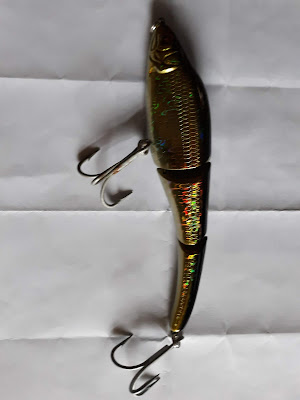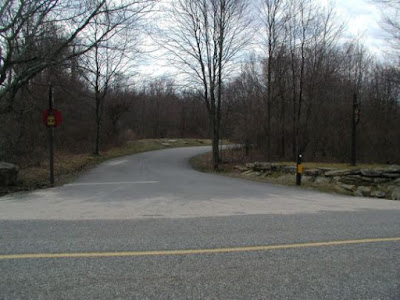Before I get into answering this question, I'd like start off by saying that there really is no "best" way to transporting your fishing kayak, this is just my opinion on the subject. I am NOT a know-it-all and make no claims as to how YOU should transport your kayak. This will give you some ideas as to how myself, and a few of my friends, go about transporting our kayak fishing rigs to, and from the launch areas.
Some of these ideas are really simple, while others are more involved with a certain creative flair between mild & wild. So, let's take a look at some of the more popular ideas out there.
The Roof Top - method "A"
Photo Credit: Rain Prisk
For the traditional kayak user, or entry level sit-inside fishing kayak buyer, this will involve the user to buy additional equipment such as roof bars and/or J-cradles to carry the kayak in a safe manner. This would also include ratchet straps to firmly secure the kayak to the J-cradle system, or as pictured, to the roof bars. It may also include bar pads that attach to the roof bars so they don't damage the underside of the kayak's hull. Most regular kayaks, and some entry level sit-inside fishing kayaks, are so light that most people can lift, or toss the kayaks onto the roof by themselves.
The Roof Top/Ladder Rack - method B
Photo Credit: Jeff Hall
While the photo isn't the greatest in quality, it actually shows two very different approaches to transporting your fishing kayak(s). But, for the sake of using another "roof top" method, here's another option - the Ladder Rack method. The truck is a Toyota Crew Cab with short bed and a ladder rack installed along the top edge of the bed. This gives you a unique way of carrying more than one kayak on a smaller truck. As you can see, the extra length of the ladder rack can accommodate longer kayaks (Hobie Pro Angler 14s & 16s) and has separate anchor areas to secure the kayak in place up top, while the bottom kayak can be secured to the nose of the truck's bed. Judging by the photo, he has a "Bed Extender" attached to the receiver hitch that also allows for the transportation of longer kayaks like the one pictured here. I will get into that topic about the "Bed Extender" in a little bit. The method of carrying a kayak this way can be expensive as it involves having a truck, buying the ladder rack, and having the strength & stamina of getting the kayak up there. Also, watch out for low bridges and tunnels, or you may not have that kayak up there anymore.
The Trailer method
Photo Credit: Jeff Hall
This is the another way to tow your kayak to the launch site using your car, SUV, or truck. It can hold all your gear in a secure area such as the back seat or trunk area. This man's trailer was well thought out. He made a custom cradle to hold his fully-rigged kayak, which would enable him to get out on the water without wasting any pre-setup time. Also, you can see that this man doesn't have to lift his kayak much to get it on the trailer. Looks to be about 4 foot high which is just tall enough to get the front end on the trailer, then go around back to lift it up and push the rest of it forward.
There are a few drawbacks to this method. The trailer will have to be equipped with turn signals, running lights, and brake lights. It will also have to be registered as well. Oh, and if you've never had the joys of backing up a trailer, you may be inventing some new swear words as you try to back out of where ever you pulled into - you'll have to invest in a rear facing backup camera and extra wide outside mirrors for your vehicle.
*NOTE - It really helps if have an extra person with you. If you came alone, don't be afraid to ask someone to be a spotter for you. It will be a huge help!
The Truck Bed and/or Bed Extender method
My kayak is seen here with my old Dodge truck. I just drop the tailgate, load up my kayak, and use two ratchet straps - one attaches to the top bed stake hole, then I slip the other end down into the pedal drive hole and up to the bed stake hole, and the other attaches to the receiver hitch to keep the kayak's rear end from swaying left & right in the turns.
Photo Credit: Jeff Hall
This man slides his kayak into the bed of his work truck and straps it in place so it stays put.
Photo Credit: Jeff Hall
As mentioned earlier, here's a prime example of a "bed extender" in action. This is great for kayaks that are too long for those trucks that have short beds. The main purpose of the bed extender is to have the longer kayak stay put while traveling. Without it, the kayak's weight may cause the kayak's rear portion to sag, or droop down while traveling. This man has a Yeti Cooler on his kayak, but the bar keeps the kayak where it's supposed to be - in the truck's bed. It also helps to keep annoying tailgaters away from the back of your truck. Trust me, that bar is a lot stronger than you think! Many people put foam rollers or cut pieces of carpet on the back of the top bar to protect the bottom of the kayak's hull. I put foam pool noodles on the stake sides to keep the arms from scratching the kayak's sides. I also have a red flag hanging off the back of the kayak.
Photo Credit: Jeff Hall
This guy uses PVC pipes as rollers on the bottom and sides to protect his kayak. Once again, the bed extender is holding up the rear portion of his kayak as he transports both the kayak AND a kettle-bottom charcoal grill, which was used at a "meet & greet" event in Rhode Island. As stated earlier, this guy was hit from behind by a driver who wasn't watching the road which resulted in damage to their car, but no damage to this guy's truck. I have the same bed extender on my truck, but I added extra reflective tape on the back and sides for safety.
Photo Credit: Jeff Hall
The Custom Mount method
This is what a custom kayak loading system and transport rig looks like! We met this unknown guy at a "meet and greet" a few years back. He wasn't a member of our fishing club, but he had one of coolest ways to load, unload, and transport a Hobie Outback kayak (75 lbs.). He had square tube aluminum that he welded in his garage, used a few roller wheels from Harbor Freight, a few clear inline skate wheels, a pulley system, some nylon rope, and a single bar roof carrier. He said he could drag the kayak up the custom track and hold it in place using an anchor cleat attached inside the bed. He mentioned that in the near future, he was looking to have his setup winch-driven with a handheld remote because he wasn't getting any younger! It was, by far, the oddest looking contraption among the group, and also, the most time consuming - not only to operate, but to set it up as well. But, it goes to show you that the complexity of the design is limitless, and that there's always room for improvement.
Photo Credits: Jeff Hall
So, what is the best way to transport your fishing kayak? In my opinion, I prefer the truck bed and/or bed extender method. Why, you ask? Because with the tailgate down, I have a clear view of what's behind me at all times, I can still back up AND see where I'm going, With your tailgate & kayak laying down in the back, you will get the best gas mileage because there's nothing to tow, There is plenty of room for an extra kayak and additional gear, And with the bed extender, I have an extra guard of safety back there. My bed extender cost me about $56 from Wal-Mart, I don't have to register it, and it stands up out of the way in my garage when I'm not using it. I throw my kayak in the back and secure it with just two ratchet straps! Easy and done! It's just easier for me with a truck because I've been driving them all my life since high school. There are so many ideas out there to modify your truck to carry multiple kayaks. But, that's what I would use to transport a kayak. It all depends on your budget too. You buy what you can afford, and make it work for you - it can be mild and simple, or wild and crazy! That's just my opinion.
As usual, keep those lines wet & tight! - J

























































